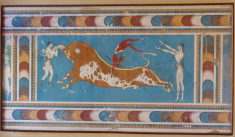Speaker
Description
The initial motivation for this study was to deeper investigate fundamentals of relativity by developing the framework that is consistent with existence of a privileged frame but, like the standard relativity theory, is based on the relativity principle and the universality of the (two-way) speed of light and is also preserving the group structure of the set of transformations between inertial frames. (An additional motivation for such an analysis is that cosmologically a preferred reference frame does exist.) Such a framework has been developed based on the following principles: (1) A degree of anisotropy of the one-way speed is a characteristic of the really existing anisotropy caused by motion of an inertial frame relative to the preferred frame; (2) Space-time transformations between inertial frames leave the equation of anisotropic light propagation invariant; (3) A set of the transformations possesses a group structure. The Lie group theory apparatus has been applied to define groups of transformations.
After developing the theory that satisfies all those requirements, it was found that such special relativity with a privileged frame allows a straightforward extension to general relativity (GR). The extension, like the standard general relativity, is based on the equivalence principle. The difference is in that a change of variables is needed for the combination invariant under the transformations to take the form of the Minkowski interval. Then the complete apparatus of general relativity can be applied but, to calculate physical effects, an inverse transformation to the 'physical' time and space intervals is to be used.
Applying the modified GR to cosmology yields the luminosity distance -- redshift relation corrected such that the observed deceleration parameter can be negative as it has been derived from the data for type Ia supernovae. Thus,
the observed negative values of the deceleration parameter can be explained within the matter-dominated Friedman-Robertson-Walker (FRW) cosmological model of the universe and so no dark energy is needed.
A number of other observations, such as Cosmic Microwave Background (CMB), and Baryon acoustic oscillations (BAO),
that are commonly considered as supporting the late-time cosmic acceleration and the existence of dark energy, also can be well fit to the model based on the relativity with a privileged frame.
